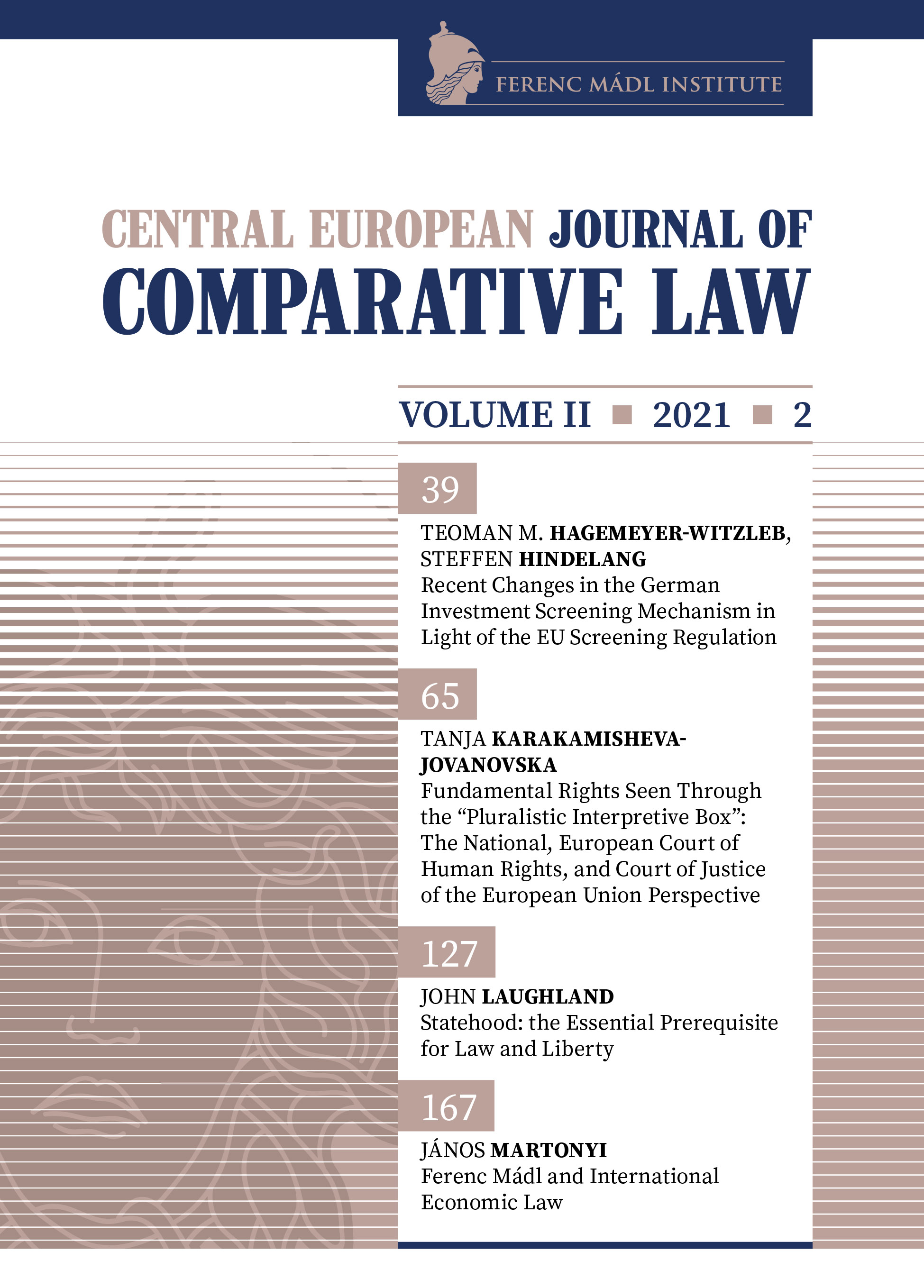Fundamental Rights Seen Through the “Pluralistic Interpretive Box”
Fundamental Rights Seen Through the “Pluralistic Interpretive Box”
The National, European Court of Human Rights, and Court of Justice of the European Union Perspective
Author(s): Tanja Karakamisheva-JovanovskaSubject(s): Law, Constitution, Jurisprudence
Published by: Mádl Ferenc Összehasonlító Jogi Intézet
Keywords: interpretative methods; principles; fundamental human rights; ECtHR; CJEU; Strasbourg Court; Luxembourg Court
Summary/Abstract: Interpretation, or the judicial understanding of the legal acts in the process of protection of the human rights, is becoming increasingly interesting and controversial, both from an aspect of the applied interpretation technique (which interpretation method is applied by the judge in a specific case and why), as well as from an aspect of the legal opportunism/legitimacy of the interpretation. It is a fact that so far, neither the European, nor the national legal theories and practice have offered coordinated systematic approach regarding the application of the legal interpretation methods, which often leads to different interpretation of the legal norms by the national and the European courts when applied in similar or identical legal situations for protection of the human rights. It is considered that the different interpretation of the legal documents by the judges endangers the protection of the human rights, but also the legal security of the citizens. Judicial discretion in choosing an interpretive method in a particular case by the national, or by the courts in Luxembourg and Strasbourg further complicates the already complex procedure of protection of human rights, which directly creates new problems instead of solving the existing ones. The "pluralistic interpretive box" is continuously filled with new and new cases from different approaches by different courts in the process of protection of human rights, which leads to increased scientific interest for a more detailed consideration of this issue.The growing scientific interest in the impact of the legal interpretation on the (non) equality of the human rights protection is the main reason for writing this paper, in which I will try to explain the connection between the three different, but still related issues encountered in the multilevel system of human rights protection in Europe. The first issue addressed in the paper concerns the most common methods of legal interpretation applied in the national and European court proceedings. The second issue concerns the search for a consistent answer to whether and how much legitimacy and legality the court decisions made by applying judicial discretion have when the interpretive method in judicial decision-making is chosen, and the third issue refers to finding an answer to the impact of such court decisions on the functionality and efficiency of the multi-level system of protection of human rights, that is, to what extent such court decisions have a positive or negative effect on the human rights protection. Given that each national court has its own instruments and techniques of interpretation by which the judges make their decisions, the need to study their causality and effectiveness is more than evident.
Journal: Central European Journal of Comparative Law
- Issue Year: 2/2021
- Issue No: 2
- Page Range: 65-79
- Page Count: 15
- Language: English

